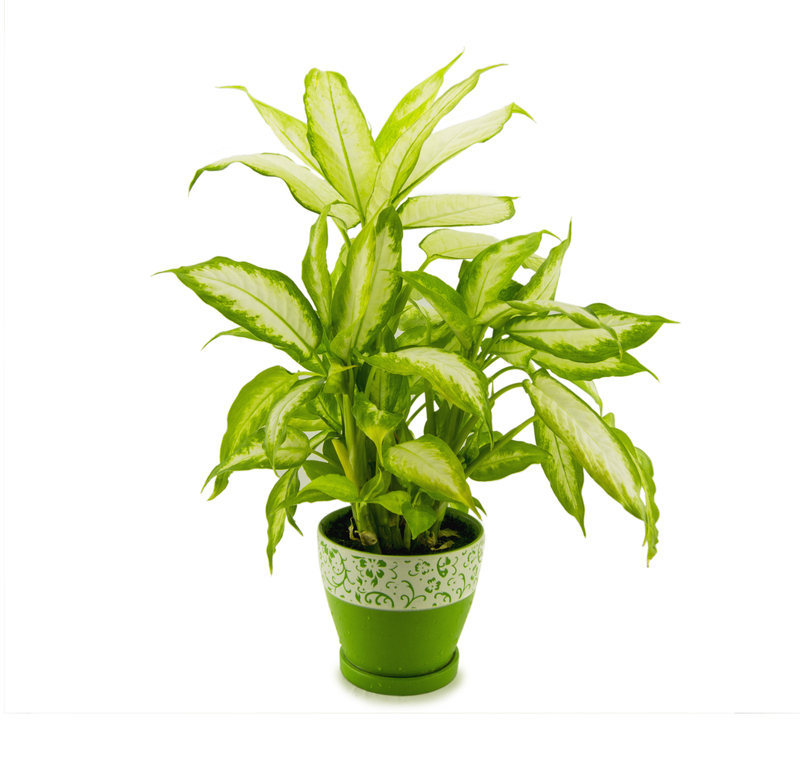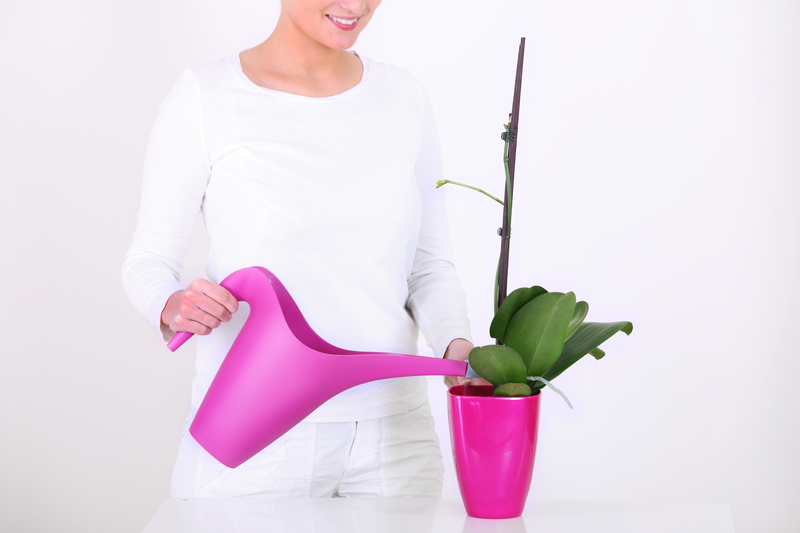Overview of Building a Garden Kids Feel Safe and Happy in
Posted on 26/08/2025
Overview of Building a Garden Kids Feel Safe and Happy In
A garden can be so much more than a place for plants to thrive; it can also become a vibrant, nurturing sanctuary where children love to play, explore, and grow. Designing a kid-friendly garden that is both safe and enjoyable is a truly rewarding endeavor for parents, educators, and caregivers. In this comprehensive guide, we offer an insightful overview of creating outdoor spaces that inspire, protect, and delight children of all ages.

Why a Safe and Happy Garden Is Important for Kids
Childhood is defined by curiosity and exploration, and gardens serve as natural canvases for these formative experiences. A thoughtfully designed children's garden encourages imaginative play, supports healthy development, and helps kids to forge lasting bonds with nature. Making safety a priority in your garden means you can foster positive, worry-free experiences for your child as they discover the wonders of the outdoors.
The Benefits of a Child-Friendly Garden
- Physical Activity: Running, jumping, and climbing in a garden help children develop coordination, balance, and strength.
- Imaginative Play: Outdoor environments stimulate creativity, letting kids turn flowers, sticks, and stones into elements of their games.
- Learning Opportunities: Gardens introduce concepts of biology, sustainability, and responsibility.
- Emotional Well-being: A nurturing garden provides tranquility and a sense of ownership for young minds.
- Social Skills: Sharing outdoor spaces with others promotes collaboration and friendship.
Steps for Building a Safe and Happy Garden for Children
Creating a garden where kids feel protected and joyful involves a blend of thoughtful planning, clever design, and suitable plant and material choices. Let's break down the essential steps for a successful, child-focused garden:
1. Plan Your Space with Safety in Mind
Start by assessing your outdoor area from a child's perspective. Remove any hazards such as sharp objects, toxic plants, uncovered ponds, or unstable structures. Fencing is also crucial--a secure boundary keeps children safe within the garden and away from driveways or roads.
- Choose soft ground surfaces such as grass, mulch, or rubber tiles to cushion falls.
- Keep chemicals and tools safely locked away and out of sight.
- Eliminate trip hazards like protruding roots, exposed wires, or uneven stones.
- Install child-safe gates and latches on access points.
2. Design Zones for Different Activities
A well-laid-out garden should cater to the diverse interests and needs of children. Creating clearly defined zones allows for active play, quiet relaxation, and sensory exploration.
- Active Play Area: Include a patch of lawn, climbing frames, or a sandpit--choose equipment suitable for your child's age and supervise younger children when playing on apparatus.
- Imagination Zone: Provide corners for pretend play--old logs, playhouses, mud kitchens, or tepees encourage storytelling and role-playing.
- Sensory Garden: Plant fragrant herbs, visually striking flowers, and plants with different textures to stimulate the senses.
- Edible Garden: Allocate a small patch for growing strawberries, snap peas, or cherry tomatoes. Encourage children to plant, water, and harvest their own produce.
3. Prioritize Safe and Toxic-Free Plant Choices
Not all beautiful plants are safe for curious hands. When building a child-friendly garden, avoid species known to be toxic if ingested or touched, such as foxgloves, lilies, or oleander. Instead, opt for non-toxic, robust plants that can withstand energetic play.
- Marigolds - Bright, cheerful, and non-toxic
- Sunflowers - Stunning to watch grow, seeds are edible
- Lavender - Fragrant and attracts pollinators
- Mint, basil, or parsley - Edible and easy to maintain
- Succulents - Tough and require minimal care
Consult local nursery experts to ensure your chosen plants are safe for children and thrive in your climate.
4. Shade and Shelter Are Essential
Children love spending time outdoors, but it's important to provide shelter from the sun, wind, and rain. Incorporate shady trees, pergolas, or retractable sails for protection during playtime. This not only encourages safe play but also makes the garden more comfortable year-round.
- Choose fast-growing trees or install fabric canopies over play areas.
- Create quiet retreats with garden tents or teepees to give kids privacy and protection from the elements.
5. Encourage Creativity and Involvement
Perhaps the most magical part of creating gardens kids enjoy is involving them in the process. Ask what they'd love to see--maybe a fairy garden, a bug hotel, or a winding path? Let children help with planting, watering, or designing their own signs and decorations. Their imagination will help shape an outdoor space that truly feels like theirs.
Key Design Elements for Child-Centered Gardens
Now that you have the basic steps, let's look at specific features that contribute to a garden kids feel safe and happy in:
Secure Fencing and Pathways
- Sturdy fencing--at least 1.2 meters high--keeps children within sight and prevents wandering.
- Wide, even paths--consider non-slip materials for easy navigation by small feet and strollers.
Age-Appropriate Play Equipment
- Swings, slides, or climbing frames--certified for safety and installed securely on impact-absorbing surfaces.
- Sandbox or mud kitchen--encourages tactile, creative play.
Natural Discovery Corners
- Bug hotels or mini ponds (with mesh covers for safety)--support local wildlife and stimulate curiosity.
- Log piles or pebble beds--offer sensory experiences and a home for friendly insects.
Seating for Rest and Supervision
- Benches or picnic tables--offer restful spots for snacks, crafts, or reading together.
- Shade structures--essential for safe, sunny-day play.
Lighting and Visibility
- Soft pathway lights or solar-powered lanterns--illuminate paths in the evening, for extended playtime and safety.
- Open sightlines--avoid dense, tall shrubs that block caregivers' views.
Enhancing Happiness in the Outdoor Environment
Safety is fundamental, but happiness in the garden comes from freedom, creativity, and a sense of belonging. Here are some ways to nurture joy and wonder:
Encourage Unstructured Play
Allow children to make up their own games and explore at their own pace. Unstructured time is essential for developing problem-solving skills and confidence.
Sensory and Edible Gardens
Mix edible plants, fragrant herbs, and textural foliage. Kids love to pick and taste strawberries or snap peas fresh from the garden--it's not only fun but teaches about healthy eating and plant life cycles.
Nature-Inspired Art and Discovery
Incorporate simple DIY projects, such as painted rocks, bird feeders, wind chimes, or stepping stones. These touches personalize the space and offer ongoing projects children can be proud of.
Wildlife-Friendly Features
- Nectar-rich flowers support butterflies and bees.
- Birdhouses and feeders attract feathered friends for observation.
- Simple wildlife ponds (safely fenced or covered) introduce aquatic life.
Safety Checklist for Kid-Friendly Gardens
Ensuring peace of mind in your garden oasis involves regular checks and maintenance tasks:
- Inspect for hazards--regularly walk your garden to spot and remove sharp objects, poisonous plants, or tripping risks.
- Check fences and gates--make sure they're sturdy, secure, and without gaps.
- Review play structures--look for rust, splinters, and loose bolts.
- Clean up toys and tools--keep equipment tidied away after use.
- Supervise water features--never leave kids unattended near ponds or baths, even if shallow.

Tips for Ongoing Enjoyment and Growth
- Rotate toys and activities regularly to keep the environment stimulating and fresh.
- Let children take ownership of small garden projects--watering, weeding, or harvesting instills responsibility and pride.
- Organize family gardening days to bond and model healthy, sustainable habits.
- Celebrate successes--cherish first blooms, abundant harvests, or nature discoveries to foster a positive connection to the garden.
Conclusion: Growing a Safe and Happy Garden for Kids
Building a garden that kids feel safe and happy in is an investment in their well-being, growth, and lifelong relationship with nature. By blending creative design, careful plant selection, and practical safety measures, you can craft an outdoor retreat that nurtures curiosity, confidence, and joy. Whether transforming a large backyard or a small urban plot, the keys to a successful child-friendly garden are safety, stimulation, and adaptability.
As children dig, plant, and play under your watchful eye, they gain invaluable skills and memories that will last a lifetime. With these tips and design ideas, your garden can become a cherished haven where children--and their imaginations--can truly flourish.
Share Your Journey
Inspired to start your own safe and happy kids' garden? Share your progress, successes, and creative ideas to inspire others and help children everywhere enjoy the boundless rewards of nature play!



